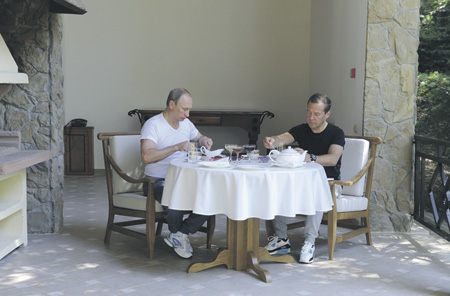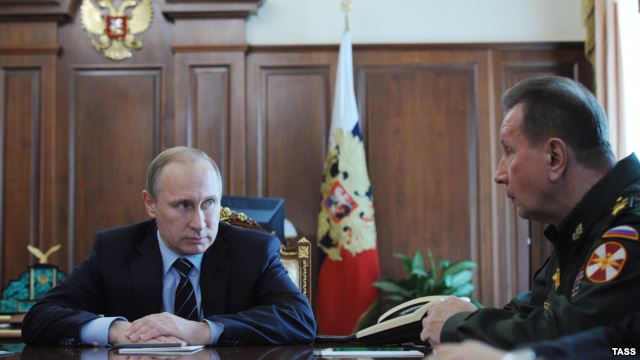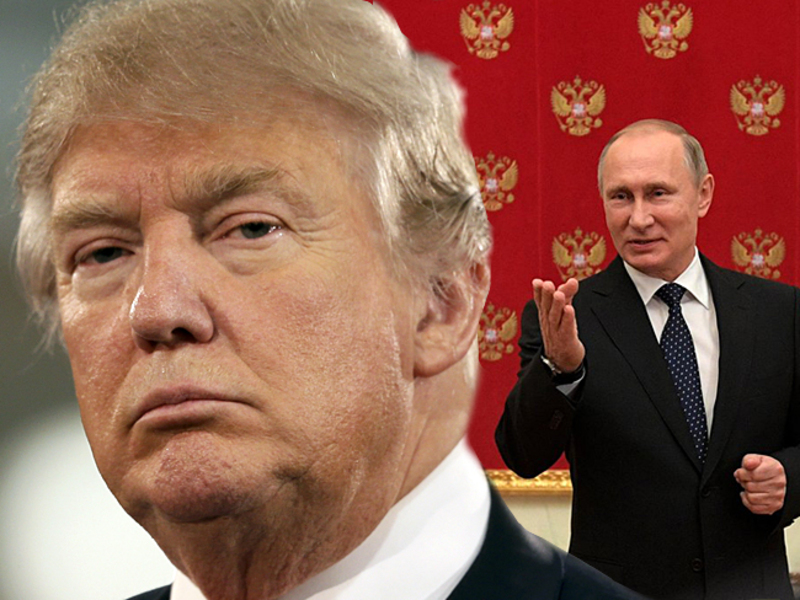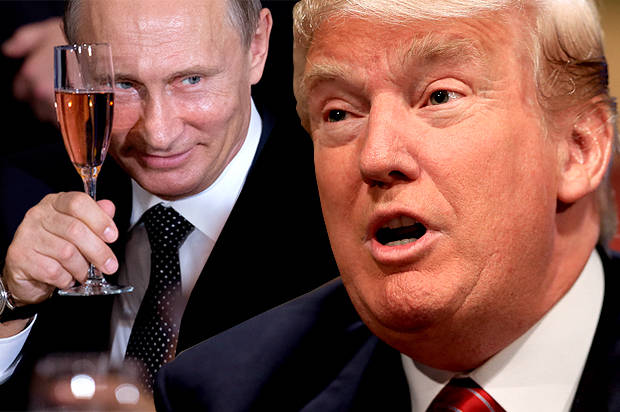When Vladimir Putin first appeared on the Russian political Olympus, people asked “Who is Mr. Putin?” In the years since that time, they have continued to ask because the Kremlin leader has changed fundamentally at least three times, a reflection of the situation he has found himself in and his own agendas.
Now, in the wake of the Crimean Anschluss, he has changed again, Tatyana Stanovaya says, and it is important to consider who “Putin 3.1” is, especially since this latest version represents a radical departure from the inertial moves “toward oligarchic state capitalism of an authoritarian type.”
To make her point, the head of the Moscow Center for Political Technologies analysis department traces Putin’s evolution up to now, an evolution which shows him to be “a very flexible individual” and one that has presented to the world “three ‘editions’ of Putin and his policies,” editions, she points out, that have “not always corresponded with his terms in office.”
Putin 1.0 existed only from 2000 to the beginning of 2003, she says. It was a time when Putin’s hands were tied, when everyone was waiting to see what would happen, and of small conflicts with Berezovsky and others. It was also time when Putin “adapted himself to his new political and human mission.”
He and Russia had great hopes nationally and internationally, for major changes at home and for Russian-American friendship and full membership in the G7. But this idyl was ended in 2003 both at home, as a result of the YUKOS case, and abroad, because of the Iraq war. And a new and very different Putin emerged.
“It is difficult to say which was primary: the transformation of the Putin regime into a conservative-monocentric” one or “blows to the regime including disappointment in the US and challenges from Khodorkovsky.” But “one thing is clear: after 2003,” Russia was headed in a very different direction under Putin 2.0.
This version of Putin reduced the liberals to a marginal position, liquidated the oligarchs as a class, constructed the power vertical, sharply simplified the party system, and marginalized all of Putin’s major opponents, Stanovaya says. As such, it was a time of political institution building even if the new buildings were being put up over others that were destroyed.
During this period, Putin gradually “concentrated in his hands the real levers of influence and administration,” often without an apparent roadmap but reflecting his preferences in response to evolving circumstances. One can say that his 2.0 agenda “bore in large measure an inertial character.”
Real reforms were clearly needed at this point, Stanovaya says, “but the political will [to choose and implement them] became ever less.” As a result, decisions were increasingly “reactive,” that is, those who were most impressive in Putin’s eyes were the ones who won at any particular point.
Then there was a three-year break in this process of Putin’s evolution. Nominally, Dmitry Medvedev was president from 2008 to 2012, but in fact, the successor was really in office only “until September 2011.” And that period, Stanovaya argues, “was one of the most interesting periods of contemporary Russian history.”
Within its parameters, there was a thaw, new life in the elites, a struggle with corruption, and an agenda that was clear and understandable. “But now four years after September 2011, who remembers this?” Instead, people view it as “the anti-matter of the Putin regime,” and it might have become that: a second Medvedev term might have turned Russia in a new direction.
“Perhaps,” the Moscow analyst says, “that is why Putin returned.” But when he did, he came back as Putin 3.0, something “the country understood immediately,” leading to the wave of protests of the end of 2011 and the beginning of 2012.
Putin 3.0 presents a mystery in one sense: His agenda was anything but clear because “the declared goals and programs did not correspond with the collection of political and administrative tasks dictated by life itself,” and at the same time, they weren’t simply about restoration but about insuring the regime against any challenges to its position.
Under Putin 3.0, a new political establishment was formed whose main goal was to “occupy positions and distribute resources. The conservative wave became the political result and inevitable condition of this establishment,” and it was something Putin was in harmony with, especially as he came to view the West not as a partner but as a threat to his Russia.
The latent cold war “broke out with new force touching not only issues of competition on the post-Soviet space or the problems of strategic security but provoking a conflict over values,” no longer about human rights in Russia but about civilizational “degradation of the West itself.”
“The real ‘historic task’ of the system under Putin 3.0,” Stanovaya says, “was the rehabilitation of the regime after the Medvedev experiments but in a harsher and more defensive form.” No one can say “how long this process might have lasted had it not been for the Ukrainian crisis of 2014.”
That crisis and the use of force it involved led to the birth of “a new Putin, Putin 3.1,” she argues. It wasn’t necessarily Putin’s choice but his response to Russia’s loss of status in the G8 and to the loss of resources for the complete construction of a corporate state. Putin thus found himself in a new position.
He turned out to be “at the head of a state without resources sufficient for the inertial continuation of its former movement and a leader who has practically no remaining foreign policy partners with which the country can feel comfortable.”
“However paradoxical it may seem,” Stanovaya says, “the historical situation today is pushing Russia toward a [new] 2008. Only the president is Putin, and the reformers have been driven underground.” Thus, no one should be surprised by “the rehabilitation of Medvedev. The times require it.”
The Crimean Anschluss thus was “an all-embracing process of the destruction of the old model of political engineering” and one that involved “an outburst of Russian nationalism, isolationist trends, [and] the neutralization of the extra-systemic liberal opposition.” And in that environment, Putin 3.1 is taking shape.
A key aspect of this Putin is that politics is directed “not at the achievement of tasks but at avoiding critical points,” not at changing the economy but at lifting or at least preventing new sanctions, and to do so in order to avoid any revolution, something that has led to an ever greyer political scene.
One important aspect of this, Stanovaya says, is that the current system is distinguished “from previous anti-orange lines” by the fact that “there is no understanding of what the vertical should be or how the political architecture should be arranged under conditions of political turbulence and social and political risks.”
As a result, many of the institutional arrangements are degrading and splitting into various parts. But somehow, the Russian people “remain on the side of all this. The people is swallowed up by television but ever more often looks at the emptying shelves of the refrigerator… Of course, the Americans are guilty of all this.” The people accept this for now.
“The mistake of many observers is that they are waiting for the time when the people will fall out of love with Putin and become disappointed in him. But this will happen only later. First will be anger toward the ruling elite, the corrupt, and the bureaucrats. And the bourgeoisie, for social solidarity is indivisible from corporatism.”
When that happens, Stanovaya concludes, Putin 3.0 will have to choose between the elite and the people; and on that choice will depend more than the regime. It could lead to a repetition of “’the greatest catastrophe of the century,’ if the authorities do not find in themselves the political will for a modernized agenda.”





